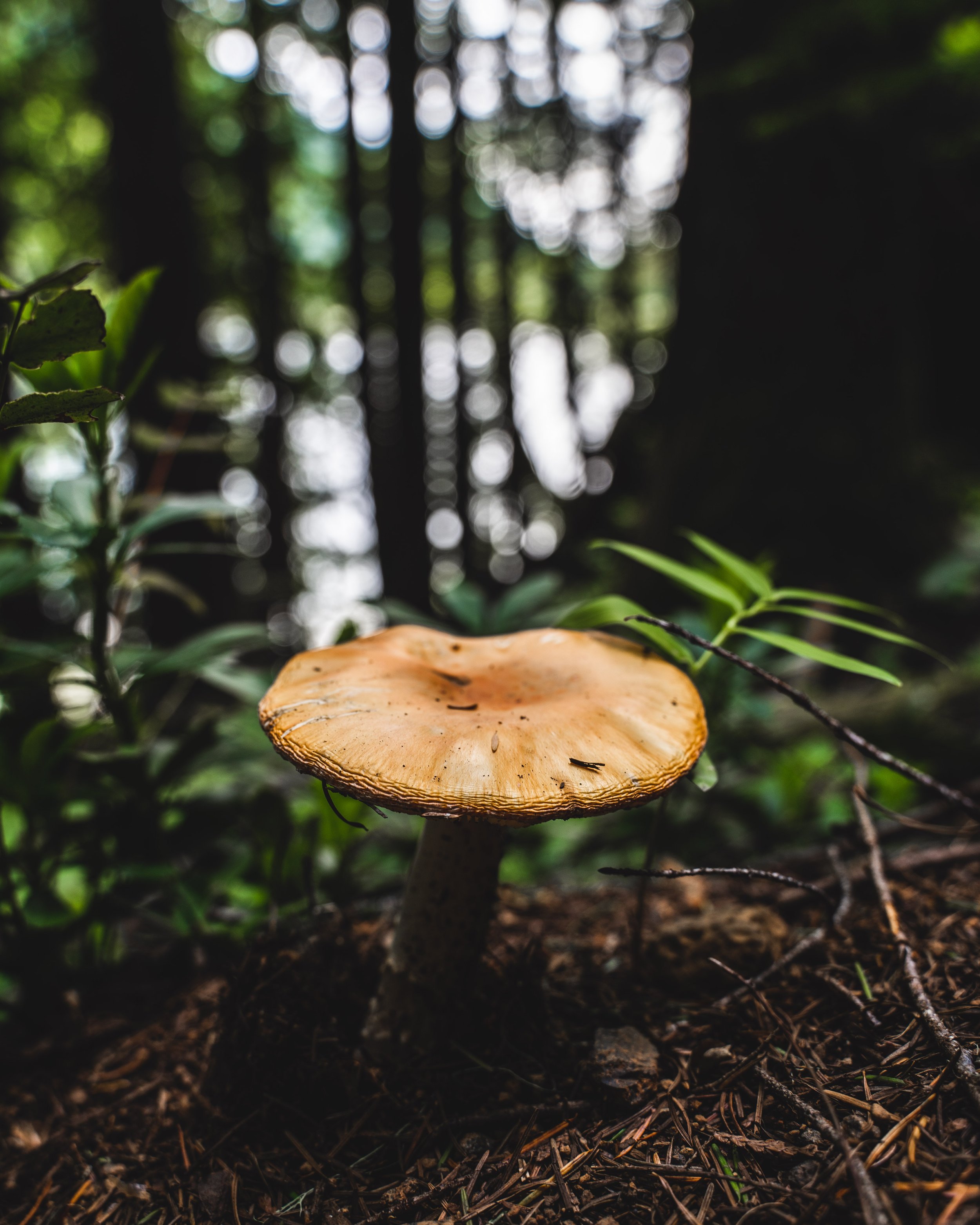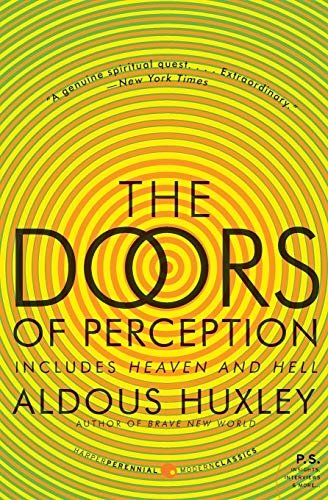Lecture 19:
Psychedelics and Mental Health
“Heal yourself with the light of the sun and the rays of the moon. With the sound of the river and the waterfall. With the swaying of the sea and the fluttering of birds. Heal yourself with mint, neem, and eucalyptus. Sweeten with lavender, rosemary, and chamomile. Hug yourself with the cocoa bean and a hint of cinnamon. Put love in tea instead of sugar and drink it looking at the stars. Heal yourself with the kisses that the wind gives you and the hugs of the rain. Stand strong with your bare feet on the ground and with everything that comes from it. Be smarter every day by listening to your intuition, looking at the world with your forehead. Jump, dance, sing, so that you live happier. Heal yourself, with beautiful love, and always remember … you are the medicine.”
-Maria Sabina, Oaxacan shaman and poet
Psychedelics alter the mental landscape in radical ways, changing the inner experience of the participant, particularly in their emotional selves. Feelings of interconnectedness, universal love, cosmic care and purpose, can be experienced. Many psychedelics are relatively safe in that they are non-addicting and have a very low likelihood of causing an overdose. They were outlawed in 1973 in the United States owing in part to misinformation about their safety as well as cultural/political pressures. Recently, the therapeutic potential of psychedelics has begun to be re-examined and therapeutic centers are beginning to appear. In Oregon, it is now legal to take the psychedelic psilocybin (the active ingredient in magic mushrooms) for therapeutic purposes. Psychedelics have potential benefits for a wide range of mental health issues, including depression, PTSD, OCD, end-of-life anxiety, and other anxiety disorders. Typical treatment consists of a couple of carefully guided and monitored trips in a treatment center in which a guide and a licensed therapist/psychologist/psychiatrist are present. Psychedelics appear to enhance synaptic plasticity in critical emotional and thought pathways in the brain - allowing old emotional/thought patterns that are the origin of the mental health issue to resolve and be replaced by more skillful feelings and thoughts. Research into the therapeutic potential and mechanisms of psychedelics is rapidly increasing and will lead to a greater understanding over the coming decade(s).
Learning Objectives:
Psychedelics have received renewed attention for the possible treatment of depression, PTSD, end-of-life anxiety, and other anxiety disorders.
Common psychedelics are psilocybin, LSD, and MDMA. These are non-addicting and much safer than many other psychoactive drugs, including alcohol. The therapeutic use of psilocybin is legal in Oregon and treatment centers are beginning to appear.
The experience during psychedelic trips is strongly dependent upon the “set” and “setting”. Set refers to the mindset of the participant, while setting refers to the setting under which the trip is experienced. It is highly encouraged that trips are facilitated and monitored by an experienced guide and therapist.
Participants in psychedelic trips often refer to the experience as one of the most important in their life. Feelings of universal love, the connection between all living beings, and a cosmic purpose are common and can be life-changing.
Some people are susceptible to experiencing a “bad trip”, which can cause long-term psychological damage and even a psychotic break, although this needs further experimental validation.
Research into the potential use of psychedelics in persistent and prolonged psychological problems is just beginning, but promising results have already been obtained.
Psychedelics modulate the serotonergic system in the brain and may increase synaptic plasticity, allowing old emotional and thought patterns to resolve. The basis for the feelings of universal love or interconnectedness of all things is not yet known.
Putting Happiness into Practice:
Weekly Activity:
Psychedelic trips are often compared to deeply spiritual experiences or connections to a deeper meaning in life. Similar experiences can be achieved through meditation and a lighter version can be experienced through immersion in the natural world. This week, find the opportunity to meditate deeply, if you are so practiced, achieving a higher Jhana state. Jhana states vary from bliss, joy, balance, and equanimity at the early levels, to a sense of loss of body and mind boundaries (expansion into infinite space), to a complete loss of emotion and material presence (a state of pure consciousness) at a deeper state. Jhana meditation may take years of practice to regularly attain these deep meditative states. If you are not a deep meditator, simply immerse yourself in nature. Be alone and aware of the awesome beauty of the natural world. Hike silently in the woods, and stare up at the trees, noticing the perfection of their design and function. Let your mind go so that you experience the feel of the air on your skin, the sun on your face, and the sounds of the woods. Truly immerse yourself and know that you, also, are of this world. You belong here - you are natural, and you are beautiful. You are perfect just as you are.
Read
You can purchase Doors of Perception by Aldous Huxley here
You can purchase How to Change Your Mind by Michael Pollan here
-
BOOKS
Am I Dreaming? - James Kingsland — purchase here
Plants of the Gods: Their Sacred, Healing, and Hallucinogenic Powers - Richard Evans Schultes, Albert Hoffman, and Christian Ratsch — purchase here
Psychedelic Medicine: The Healing Powers of LSD, MDMA, Psilocbyin, and Ayahuasca - Dr. Richard Louis Miller — purchase here
The Joyous Cosmology: Adventures in the Chemistry of Consciousness - Alan Watts — purchase here
SCHOLARLY PUBLICATIONS
“The past and future of psychedelic science: an introduction to the issue” - National Library of Medicine
“How do serotonergic psychedelics treat depression: the potential role of neuroplasticity” - NLM
“The therapeutic potential of microdosing psychedelics in depression” - Kim P.C. Kuypers, et al.
“Classical Psychedelics for the Treatment of depression and anxiety: a systematic review” - Silvia Mutoni, Maddalena Ardissino, and Christopher John
“Psychedelic Cognition – The Unreached Frontier of Psychedelic Science” - Maria Bălăeţ
POPULAR SOURCES
“Psilocybin Treatment for Major Depression Effective Up to a Year for Most Patients, Study Shows” - John Hopkins Medicine
“Can a Psychedelic Experience Improve Your Life?” - Greater Good
“Psychedelic Drugs Take On Depression” - Nature
“Taking the Magic Out of Magic Mushrooms” - NY Times
“How Psychedelic Drugs Might Treat Depression” - BBC Future
“A Brief History of Psychedelic Psychiatry” - The Guardian
“The History of Psychedelics in America” - Psychable
Watch
-
Watch “How to Change Your Mind” Netflix series
This Is Your Brain On Shrooms - Neuro Transmissions
Expert Answers Psychedelics Questions From Twitter (ft. Michael Pollan) - WIRED
Psychedelics: The scientific renaissance of mind-altering drugs - Big Think
The “heroic dose” of psychedelics, according to Johns Hopkins - Big Think
The Neuroscience of Psychedelics - The Curious Minds
Can Psychedelics Help Black and Brown and Indigenous People Heal Trauma? - A Colorful World
6 Ways Mushrooms Can Save the World - TED
Psychedelics Are Fueling a Mental Health Revolution - Bloomberg Quicktake: Originals
Meet the Colorado moms who microdose mushrooms - Rocky Mountain PBS
The Battle Over Psychedelic Therapy’s Future - VICE News
Black People Are Taking Shrooms To Heal From Racism - VICE News
Ancient History of Psilocybin Mushroom Use - MycoMeditations
7 Tips for Handling a "Bad" Trip - MycoMeditations
I Tried Psychedelics For the 1st Time & It Changed My Life - Nathaniel Drew
Listen
-
Neurotransmitter Systems and Novel Psychedelic Molecules - Psychedelics Today
Cannabis and Psilocybin: The Complications of Legality Inside an Endless Drug Warm - Psychedelics Today
Racism, Trauma, Research, and Psychedelics - Psychedelics Today
The Power of Storytelling, the Preservation of Peyote, and “How to Change Your Mind” - Psychedelics Today
Ancestral Veneration, Psychedelic-Assisted Therapy For (and By) BIPOC - Psychedelics Today
Psychedelics — Inequalities and Hope - MAPS
Michael Pollan - MAPS
The New Science of Psychedelics and Mental health - MAPS
Dr. Gabor Mate: Jungle to Civilization, Health in a Toxic Culture - MAPS
Psilocybin as an Agent for Human and Cultural Development - Spotlight Media
Consolidating Plant Medicine, Permaculture and Indigenous Wisdom - Spotlight Media
Exploring Integrative Therapy and Altered States of Consciousness - Spotlight Media
Read Greater Good Magazine’s article, “What Psychedelics Can Teach Us About Human Connection” - Eve Erkman



